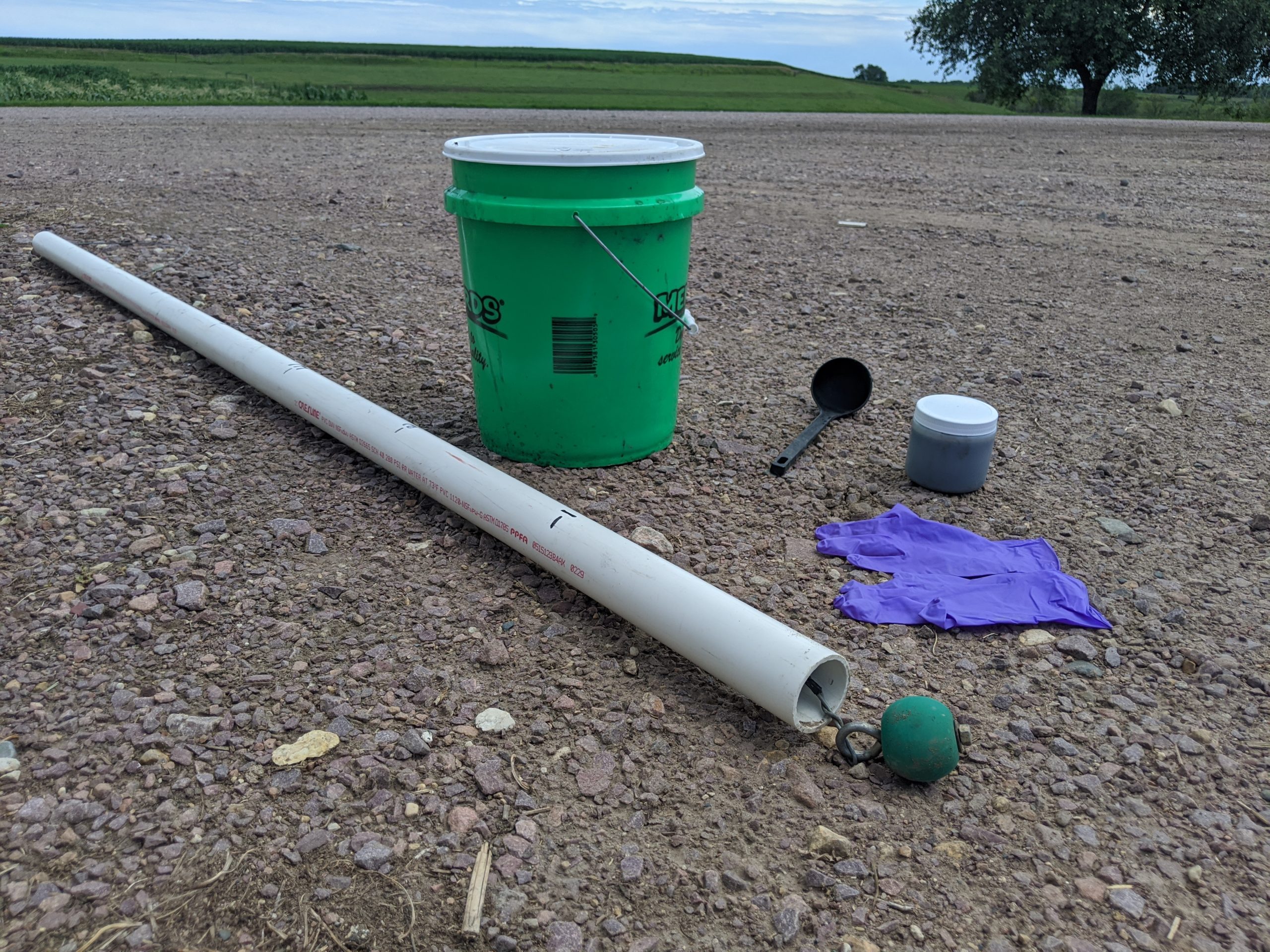
While it seems exceedingly basic, one of the most common questions I get asked is how to take a good manure sample. When planning to apply manure to a field or pasture, you need to know the nutrient content to determine how much manure to apply and to make sure you don’t over-apply; this requires manure sampling. And taking a good, representative sample is important for accurate application.
There are many tables out there that give average nutrient values for manure, called book values, but we advise against using these as the actual values can vary widely due to a variety of factors, such as storage facility, bedding, and diet.
When to sample
There are two main options for sampling timing: prior to application or during application. For large operations, we recommend sampling manure at application right off the spreader or during pumping to get the best estimate of what is actually being applied. The main drawback with this approach is you won’t get results back until after application. But once you’ve sampled a few times, the nutrient content should remain similar as long as no management practices have changed. So, keeping good records is important!
For small farms with solid manure, sampling from the stockpile before application is acceptable since the amount of manure is low and less likely to be highly variable, compared to large volumes of manure.
How often to sample
The frequency of sampling largely depends on what record-keeping is required in your location. As a minimum, we recommend sampling annually for the first three years of operation, and then every three to four years or whenever manure management changes. However, sampling more often – every year or at each time of application – will give you the best opportunity for accurate application.
How to sample solid manure
To sample solid manure, use a shovel or probe to dig out a small amount of manure from the stockpile or spreader. Try to avoid sampling from the edges or crust and vary the amount of bedding in the sample. Take many small samples from many locations and place in a clean plastic bucket. Then, mix your small samples together in the bucket with a gloved hand or stick. The more samples taken, and the better you mix them together, the more accurate your results will be. Next, take a sample of the manure you mixed and place it in a well-labeled, double-bagged plastic sample bag. Finally, freeze the sample before sending it to the testing lab. You do not want to leave the manure sample in a warm area because some of the manure nutrients will be converted to gas within the bag and lost when the bag is opened. If you are mailing the sample to a testing lab, try to send it at the beginning of the week so it doesn’t sit in a delivery service vehicle over the weekend.
How to sample liquid manure
Sampling liquid manure uses the same principles listed above: take a lot of samples and mix them well. You can take a sample of the well-agitated manure during pumping or from the applicator. A ladle or cup on a stick work well to take many small samples to place in your clean plastic bucket. Once you’ve mixed the samples together well, place a sample in a plastic wide-mouth container with a screw top. Do this quickly as the solids will begin to rapidly settle out once you stop stirring. Often, testing labs will have sampling jars available. To prevent leaks (and an angry mailman), place the sample jar in a sealable bag and freeze before sending.
As always, safety during manure sampling is important. Hydrogen sulfide gas from manure can be extremely toxic and cause nausea, fainting, and in high concentrations, instantaneous death. Remember that high concentrations of this harmful gas are most likely to form in storage during agitation and can happen in both confined and open pits. Happy sampling!
